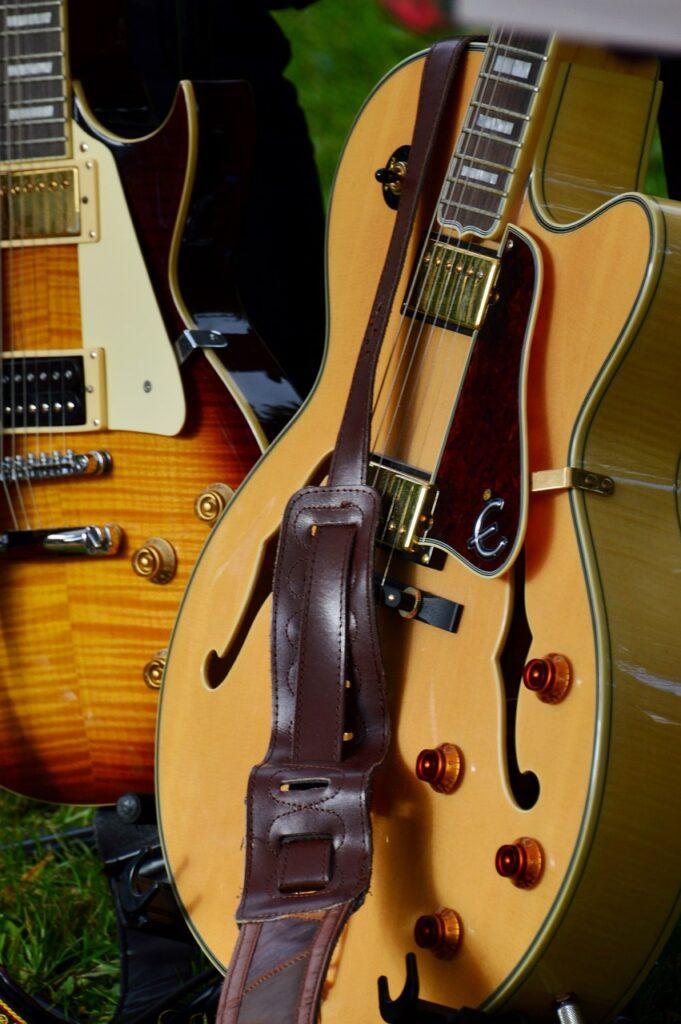Do you want to know how to tune with guitar harmonics? Using the frets to tune is the standard method (see chart above). However, tuning using harmonics remains a popular option.
- Nevertheless, a major guitar magazine has criticized tuning with harmonics because the octaves don’t yield the exact same note.
- However, intonation studies have shown that if the cent variance remains under 15 cents, that won’t be a problem. (For an explanation of cents, click here.)
- Conversely, this tuning makes the major thirds in most of your open chords sound just a little bit better than when you tune using the frets. (Hagerman and Sundberg found that the major third is the most important interval to tune in a chord.)
So, how do you tune with harmonics?
Harmonics are produced by touching the string lightly at a node for the desired mode of vibration at the same time the string is… plucked. (The New Harvard Dictionary of Music 364)
The node is the place where you touch your finger to the string. The plucked harmonic will vibrate in two, three, or four parts, depending on where you touch above the string.
For more information on harmonics:
The videos below show two popular methods for tuning with harmonics.
- The chart below shows the theoretical cent values for Justin’s tuning method. Since he mostly uses the 5th and 7th fret harmonics, this tunes the strings to pure fourths.
- Unlike the Standard Tuning chart above, you can see that the cents values (in the ones place) of the strings get progressively smaller on Justin’s chart.
- The exception is the second string, which has been tuned to a pure fifth instead of a pure fourth.


